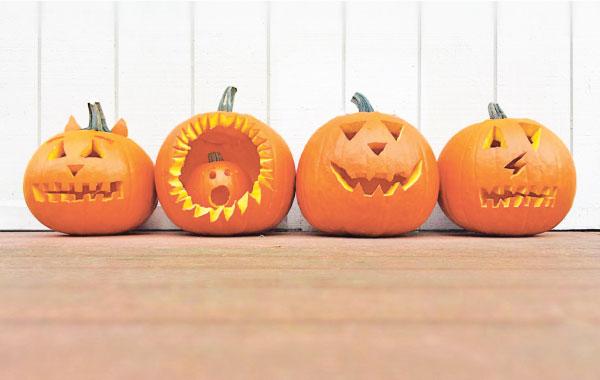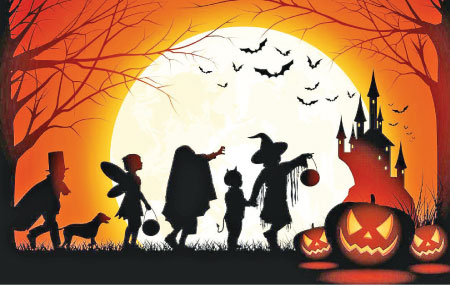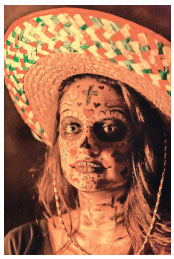
The Celts were ancient people who lived in Northern Europe, and Halloween comes from an old Celtic Festival called Samhain celebrated to mark the end of Summer. The Celts were the first people to celebrate Samhain or Halloween as it is called today. Samhain was most probably celebrated then in countries like England, Ireland and France. The other historical reason for celebration is the Christian All Hallows Day.
Halloween is celebrated on October 31 evening which is just before the two Christian holy days named All Hallows’ Day.
These two holy days are All Saints’ day or Hallowmas on November first and All Souls Day on November second. Today, Halloween is celebrated in many countries, both in the East and West. 
How did the name Halloween come to be? Halloween is the evening before All Hallows Day. Originally, it was known as All Hallow’s Eve. With time, All Hallow’s Eve was changed to Halloween.
At first, Samhain was a pagan or non - religious festival and the then Church disapproved of such pagan festivals, including Samhain.
To make Samhain a religious festival, the Church in 800 AD moved All Saints’ Day from Spring to November first and Samhain became All Hallow’s Eve and then was later changed to Halloween.
The Celts were a superstitious people who believed that the spirits of the dead wandered about their towns and villages on October 31 and were fearful that the spirits would make them incurably sick and harm their crops. To keep the spirits at bay, these ancient people dressed up in frightening costumes made from animal skins and made and lit enormous bonfires. These traditions continue to this day.
Halloween is a fun time for children. They dress up and go trick or treating on this day. How did this tradtion begin?
 Trick or treat?
Trick or treat?
The trick or treat tradition has its origins in the ancient custom called souling. In olden times, poor people used to go from house to house begging for soul cakes. These were round cakes made from bread with currants. In return for soul cakes, the poor people would pray for the dead family members who gave them soul cakes.
Today, children go from house to house dressed up as witches, ghosts and other similar costumes and say “Trick or treat?” House owners generally give them sweets or candies or other treats. It is very rarely that children are refused by householders, but if it happens the children may play a trick or prank on them.
Jack o’ Lanterns
Lanterns carved from pumpkins are a must for Halloween. Smiling faces, frowning faces and other facial expressions are carved on pumpkins, and in the evening they are lit. Children carry them when they go Trick or Treating, and they are also used as decorations. Why are these pumpkin lanterns called Jack o’ Lanterns.
The name is linked to an old Celtic tale about a farmer named Stingy Jack who was a drunkard. According to the story, Stingy Jack was banned from entering heaven or hell when he died. Therefore, his soul was compelled to wander in darkness. He made a lantern from a turnip to light his way and guide his soul. The Celts believed that this story was true, and they started to make and place Jack o’ lanterns outside their home to guide lost souls wandering during the Samhain eve.
The original lanterns were created out of potatoes, but after the Great Potato Famine, people began to use pumpkins for Jack o’ lanterns. It is very rarely that Halloween would fall on a full moon night.
The last three Halloween full moon nights were in 1955, 1974 and 2001. The next Halloween full moon night will be in 2020 , which is next year.
Bonfires
In olden days, bonfires were lit on Samhain and later on, All Hallow’s eve to keep evil spirits at bay. During ancient Samhain rites, bornfires were lit to offer burnt offerings to the gods. Animal bones formed part of the burnt offerings.
It is said that the word bonfire comes from the words bones and fire. The tradition of bonfires still continue today, but it is more a fun thing.
Have a great Halloween !
